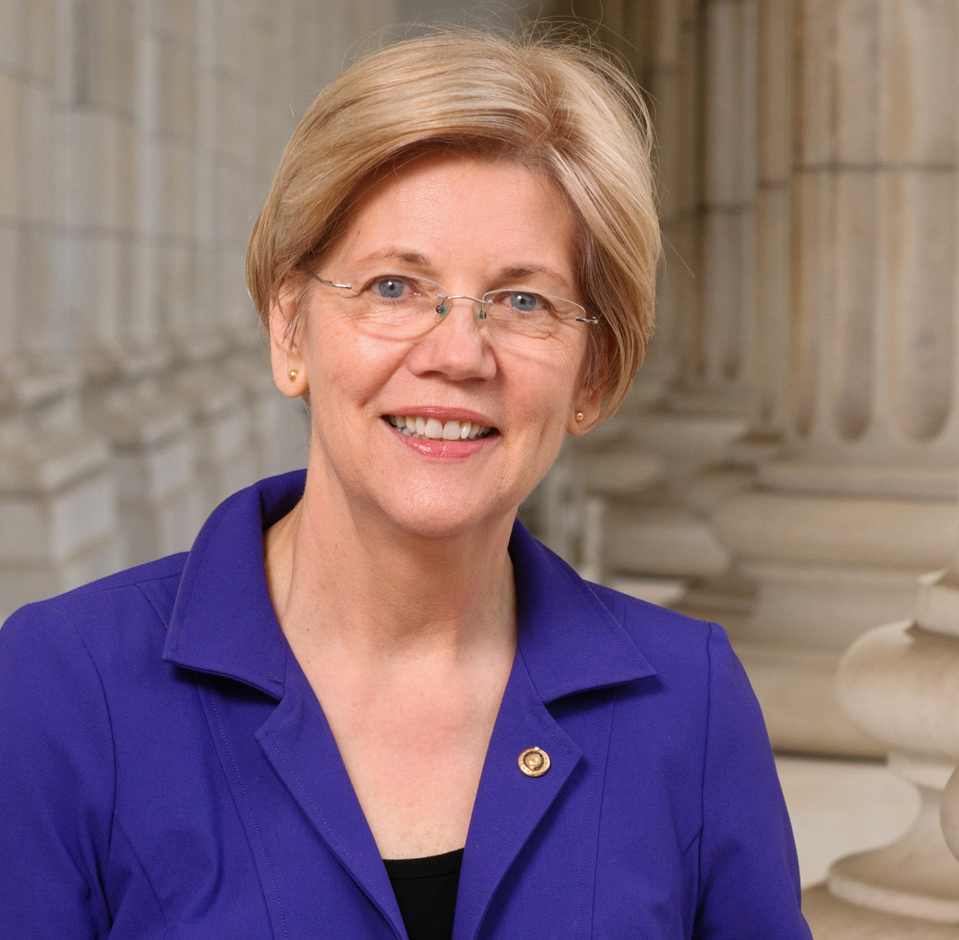
The right regulatory reforms can level the playing field between the public and powerful corporate players.
Regulatory capture is a big deal. It is one way in which powerful corporations rig the system to work for themselves—and the rest of America pays the price. The tilt in Congress is pretty much out there for everyone to see, but corporate influence works its magic even better in the shadows—and that’s where rulemaking occurs. This essay focuses on one aspect of this pervasive phenomenon: the capture of agencies as they write the rules.
When it comes to undue industry influence, our rulemaking process is broken from start to finish. At every stage, the process is loaded with opportunities for powerful industry groups to tilt the scales in their favor.
The tilt starts early. For example, a 2011 study of U.S. Environmental Protection Agency (EPA) records from 1994 to 2009 found that industry groups held a virtual monopoly over informal communications with EPA that occurred before proposed rules on hazardous air pollutants were publicly available. On average, industry groups engaged in 170 times more informal communications with EPA than public interest players—communications that occurred before any proposed rules were even written.
Similarly, with financial regulation, the big banks and their friends have been lobbying the agencies aggressively. Following the worst financial crisis in three generations—one that resulted in taxpayers spending hundreds of billions to bail out the big banks—Congress passed the Dodd-Frank Wall Street Reform and Consumer Protection Act to ensure that a crisis of that sort never happened again. This law included a provision called the Volcker Rule to stop banks from engaging in certain kinds of risky behavior. But before that rule was even written, groups representing Wall Street interests met with federal regulators 419 times, accounting for over 93 percent of meetings between federal regulators and external parties about the Rule. Less than 7 percent of meetings were with individuals and groups representing the public interest.
As rules wind their way through the process, the lobbying intensifies. When proposed rulemaking notices are published and the public has a formal opportunity to weigh in, their views are quickly buried in an avalanche of detailed, well-funded, well-credentialed comments from industry insiders and their highly-paid allies. Those EPA rules on dangerous air pollutants? Industry groups submitted 81 percent of the comments during the notice-and-comment period. Public interest groups submitted 4 percent.
Some observers argue that this resource mismatch has a smaller impact with agencies than with Congress. Unlike congressional action, agency rules are constrained by well-established judicial review standards that seek to determine whether the agency’s action is supported by the evidentiary record and the authority delegated to it by Congress. Rules must be supported by “substantial evidence”; agency actions must not be “arbitrary and capricious.”
But corporate players are savvy. They have learned that those same judicial review standards can be used to suffocate new rules. They play a sophisticated game—leveraging their own expertise and paying outside experts with purportedly independent credentials to produce long, detailed comments filled with data and analyses, all selectively produced to serve their own interests. This push to bury agencies in detailed, self-serving comments slows the process massively, and their overall dominance of the notice-and-comment process results in rules that are longer, more complicated, and more to the liking of the most powerful players in the game.
Over the last few decades, additional barriers to rulemaking have popped up. Requirements include conducting cost-benefit analyses and evaluating the impact of the rule on small businesses and the environment. Sometimes these processes result in better rules, but often these are just more obstacles that result in even longer, more complex rules, and even more opportunities for well-heeled industry players to slow things down and build in exceptions to benefit themselves.
Consider the Office of Information and Regulatory Affairs, or OIRA, the tiny, obscure, and incredibly powerful agency that reviews significant regulatory proposals developed in other parts of the government before they can take effect. A study of interest group meetings with OIRA showed that between October 1, 2001 to June 1, 2011, OIRA met with five times as many representatives of industry as with people representing public interest groups. And just last year, two professors at the University of Wisconsin-Madison found a strong correlation between interest groups lobbying OIRA and changes in the final rules that favored those interest groups.
These procedures tie agencies in bureaucratic knots and bleed much-needed resources. Often agencies just give up entirely on writing new rules—a situation that tends to play out when Congress or the courts have directed an agency to issue a specific rule by a specific time. A recent study of such deadlines between 1996 and 2014 showed that over 50 percent of final rules were not finished on or before their mandated deadlines. To reiterate, more than half of the time, federal agencies did not meet legally mandated deadlines. For example, Dodd-Frank was passed almost six years ago, but as of today, agencies still have not finalized nearly one quarter of their required rules.
These delays can put lives at risk. Five years ago, Congress passed FDA Food Safety Modernization Act to revamp food safety laws. Regulations were due in 2012. Many were not published until 2015, and then only after a court ordered FDA to publish the regulations. Meanwhile, every year, 3,000 Americans were dying from foodborne illnesses, and 48 million Americans—one in six—was getting sick from contaminated food.
Yet, even if an agency manages to jump through all of the procedural hoops and withstands all the pressure, and actually ultimately issues a final rule, companies will sue. And the rules governing judicial review favor those who would stop the agency from acting in the public interest. Under the law, it is easy for business groups to challenge a rule for being too strong or too restrictive. But it is much harder for public interest groups or ordinary citizens to challenge a rule for being too weak or riddled with loopholes. And it is nearly impossible to challenge successfully an agency for not acting at all.
This certainly takes a toll over time. I talk with agency heads who are like beaten dogs—just trying to keep their heads down. This extreme cautiousness takes an even greater hold over agencies’ general counsels. It is hard to go up against a well-financed machine that will use every tool at its disposal to overturn years of work; it is a lot easier for an agency to give in and write a softer rule—or write no rule at all. Over time, the lobbyists’ work gets done by the agencies’ own lawyers who by this juncture have become so risk averse that they kill off agency action before it even gets off the ground.
To be clear, engaging in informal dialogue, participating in notice-and-comment, and going to court when agencies step out of line are not bad things. But over time, bludgeoning agencies into submission undercuts the public interest. The goal should be to have a system where influence over new rules is measured not by the size of the bankroll, but by the strength of the argument.
Here are a few principles that I believe would balance the scales.
First, increase transparency. The more sunlight that shines on agency processes—and on industry efforts to influence them—the more likely it is that an agency’s final product will reflect the public interest. A good start would be to disclose all meetings between agencies and interested parties, both before and during rulemaking. Another would be to help agencies and courts distinguish between legitimate, high-quality data and research, on the one hand, and bought-and- paid-for studies on the other, by requiring disclosure of financial arrangements and editorial relationships associated with regulatory comments. And anyone who wants to cite their own data should have to publish the dataset online; sure, there need to be safeguards to protect anonymity, for example, but get the data out there where other people can test drive it.
Second, level the playing field between public and private interests. The net effect of a rulemaking process dominated by business advocates is that severely under-resourced public interest advocates are simply out-gunned. States have experimented with systems that build a public advocate into the regulatory process or that compensate public interest advocates who invest resources to produce meaningful feedback on rules. Similarly, judicial review of agencies needs to be reformed to give the public a fighting chance to challenge weak rules, agency inaction, and agency capture.
Third, simplify. Complex rules take longer to finalize, are harder for the public to understand, and inevitably contain more special interest carve-outs that favor big business interests over small businesses and individuals. Complex rules are also more reliant on industry itself to provide additional detail and expertise—and that means more opportunities for capture. Simple works better.
Fourth, limit opportunities for “cultural” capture. Regulators should be beholden to the American people, not to corporate benefactors. Thus, I suggest cracking down on the revolving door, and ending golden parachutes for executives who enter government. In 2013, the Project on Government Oversight released a report showing that major corporations routinely offer their executives financial incentives—to the tune of hundreds of thousands, even millions, of dollars—for accepting government positions. The Financial Services Conflict of Interest Act, a bill introduced by Senator Tammy Baldwin (D-Wis.) and Representative Elijah Cummings (D-Md.), would make these payments illegal under the federal bribery statutes and would target conflicts of interest by removing government employees from decisions that financially benefit their former employers. That is a good start.
Finally, give agencies the money that they need to do their jobs. Writing rules, responding to thousands of comments, and separating valuable data from self-serving nonsense requires capable people with adequate resources. Starving the regulators is the quickest way to ensure that this work is essentially outsourced to the regulated industries themselves.
Regulatory reform is a popular idea, but too many proposals are supported by the industries to be regulated precisely because those proposals would create even more opportunities for them to block regulations that they do not like. Regulatory reform is badly needed, but the reforms must address the central problem—a tilted playing field that benefits the rich and powerful.
Implementing the right kind of reforms will not be easy. The industries that have captured the agencies that are tasked with regulating them will not willingly give up their power and influence. But this is about building a government that works not just for those at the top, but for all of us.
This essay is part of The Regulatory Review’s sixteen-part series, Rooting Out Regulatory Capture.
This essay is based on remarks that Senator Warren delivered at the Regulatory Capture Forum, which the Administrative Conference of the United States convened this spring.




